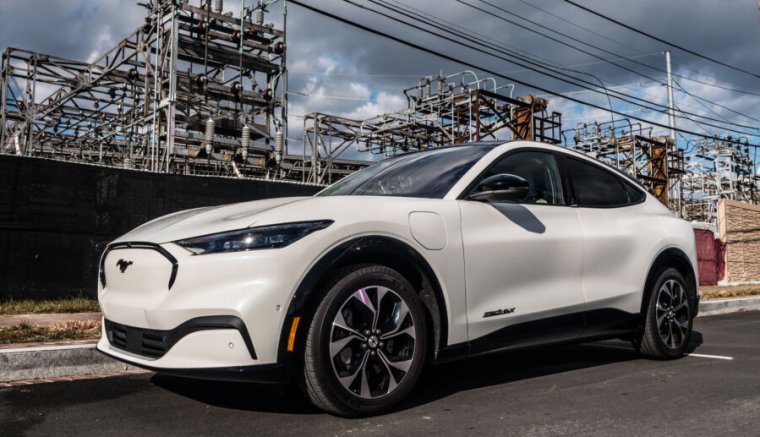
Enlarge / Yes, I am aware that photographing an electric car in front of an electricity power station is a cliché. Sorry. (credit: Jonathan Gitlin)
I wasn't expecting the Ford Mustang Mach-E to draw quite as much attention as it did. Over the past few months, I've driven some wild-looking cars, but more people pulled out their camera phones to capture the Mach-E drive past than they did for the McLaren GT. When stopped in traffic, the Mach-E garnered more curious questions—from other drivers, as well as pedestrians—than did the Polaris Slingshot. Ford's new battery electric vehicle definitely has mindshare, no doubt helped by the fact that over a year has passed since the production version was first unveiled to the public in November 2019.
I don't think I'm being hyperbolic when I say the Mach-E might be the most important new car of the year. The ubiquity of Ford dealerships makes the Mach-E accessible to people in parts of the country where brands like Tesla or Polestar have yet to reach (although, like its startup rivals, the Mach-E is configured and ordered online, not bought from a forecourt). The influence of Tesla is evident in more than just the sales process, too; the Mach-E's minimalist interior is almost button-free and dominated by a large touchscreen. But the vehicle still offers the familiarity of the Mustang name and some of the sports car's design cues to go with it, like the distinctive triple-barred tail lights.
Not everyone is on board with the Mach-E being called a Mustang. Car people in particular are unhappy that the long and storied name has been attached to a five-door crossover, not a two-door coupe. But Ford wants to sell the Mach-E to the mainstream, and the car-buying public at large wants crossovers, so here we are. Personally, I'm more upset that, over in Europe, Ford chose to resurrect the Puma as a crossover—I offer this anecdote only to show that, to normal people, we sound a bit obsessed when we complain about stuff like this. (Also, the fact is that plenty of Mustangs have been unexciting cars, as anyone who ever rented a V6-powered one in the mid-2000s will attest.)
No comments:
Post a Comment